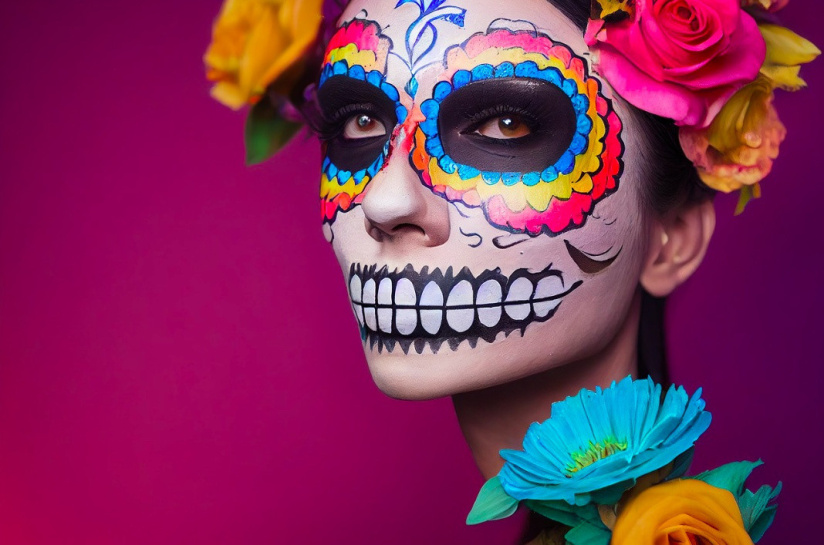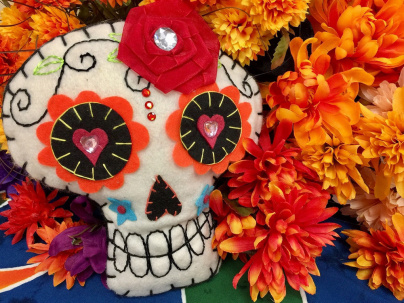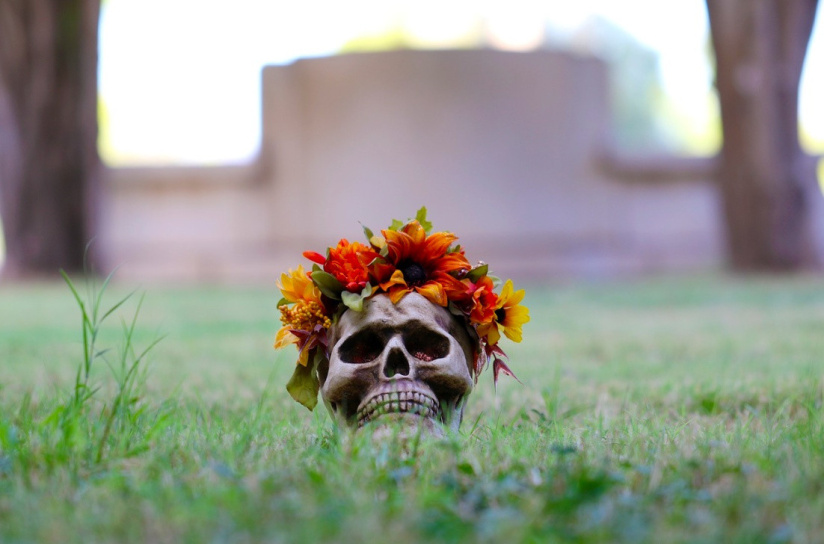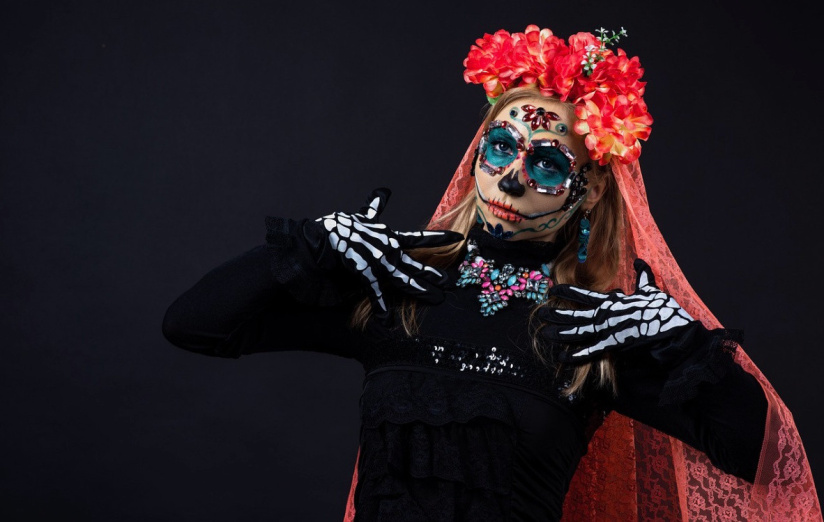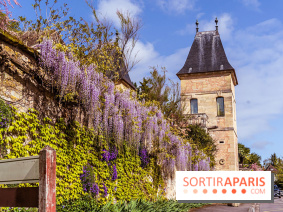Dia de Muertos, also known as Day of the Dead, is one of Mexico's most emblematic celebrations. A fusion of indigenous Mexican traditions and Catholic beliefs, this festival, which generally takes place on November 1st and 2nd each year, is widely celebrated not only throughout Mexico, but also in certain communities of Mexican origin around the world, notably in the United States.
Now part of Unesco's Intangible Cultural Heritage of Humanity, the origins of Dia de Muertos go back to pre-Columbian times, well before the arrival of the Spanish conquistadors. Indigenous civilizations, notably the Aztecs and Toltecs, practiced rituals to honor their ancestors and the dead.
These celebrations took place in August, coinciding with the end of the agricultural cycle for corn, squash, peas and beans, but the Spaniards later changed the date to synchronize it with All Saints' Day and the Catholic Feast of the Dead. A way of allowing this indigenous tradition to be incorporated into the Catholic religious calendar, a classic example of cultural syncretism and a way for the Mexican people to perpetuate their indigenous rituals and beliefs by pretending to respect Christian traditions.
However, the link between these pre-Hispanic traditions and today's version of Dia de Muertos is difficult to establish, according to historians, the latter having been popularized from the 1920s onwards by the nationalist governments that emerged from the 1910 revolution, seeking to establish and promote a unified national popular culture.
Based on the belief that the souls of the deceased return to Earth to visit their loved ones, Dia de Muertos takes place in several stages to joyously celebrate the life and memory of those who have passed on. In fact, the festival takes place over two days: November 1, known as Miccaihuitontli, Dia de los Inocentes or Dia de los Angelitos, is dedicated to honoring children who have died. November 2, known as Hueymiccalhuitl, is dedicated to deceased adults.
To honor their dead and remind them that they are loved and not forgotten, families prepare multi-level altars at home called ofrendas, decorated with cempasúchil flowers, candles, crucifixes, incense and copal, which symbolize the passage from life to death, food, personal objects and photographs of the deceased. There are also special breads called pan de muerto, sweets, drinks and traditional objects such as calaveras - skulls made of sugar, chocolate or plastic - and papel picado - paper cut-outs from Mexican handicrafts.
Cemeteries are also central to Dia de Muertos celebrations. Families visit the graves of their loved ones to clean, decorate and make offerings, throwing flower petals on the ground and lighting candles to guide souls to their graves. The marigold, a bright orange flower, is one of the most important flowers of Dia de Muertos, as it is considered the flower of the dead, supposed to guide the souls of the deceased back to their families.
In towns and villages, streets and squares are colorfully decorated with festively dressed calacas (skeletons) and catrinas (elegant skeleton ladies). People put make-up on their faces to resemble skeletons themselves, and costumes are often adorned with flower and cross-bone motifs. Parades and processions are also common in many Mexican cities, where participants wear eccentric costumes and dance to the beat of traditional music.
Yet while Dia de Muertos is a joyous and colorful celebration, it's worth noting that beliefs and traditions can vary from region to region in Mexico, and even within families. Some prefer a more religious approach, while others focus more on the cultural and festive dimension of the celebration.
This page may contain AI-assisted elements, more information here.
